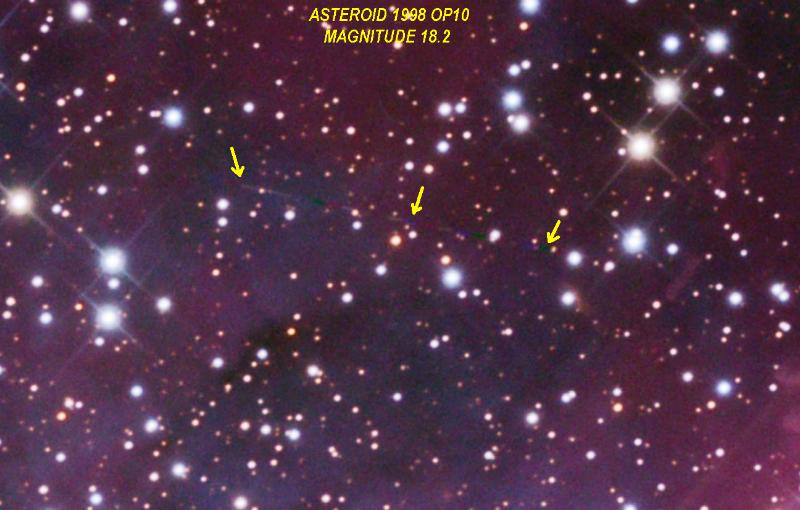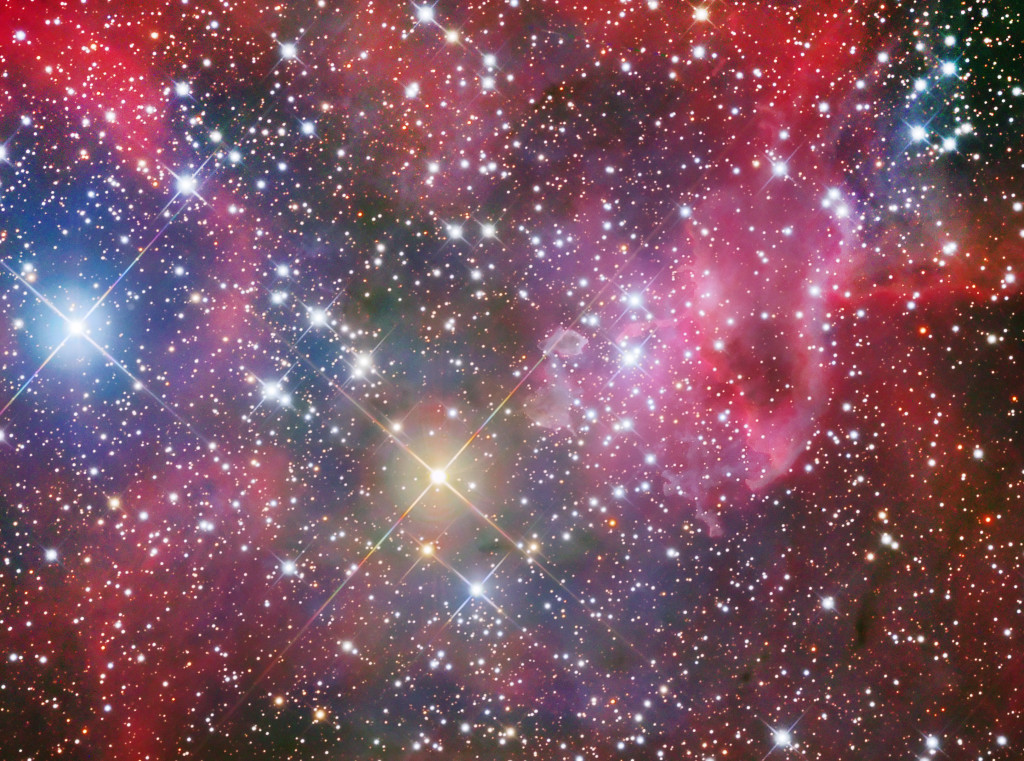
On Dec. 27, 2008, I got a chance to image an object that has intrigued me since the first time I saw Rob Gendler’s image of IC417 on his website (link below). This is a lesser known object in the constellation Auriga. Early Saturday evening, I noticed Auriga was about 30 degrees up in the east and thought this would be a good time to capture it up the east sky as it rises and down the west as it sinks. So I did multiple luminances 1X1 and color frames 2X2 including a manual “meridian flip” at about midnight. I was very familiar with other nebulae in Auriga like IC405 (Flaming Star Nebula) and IC410 (Tadpole Nebula) but Gendler’s IC417 showed a deep, colorful nebula associated with a star cluster both mingling with two very bright stars reminiscent of a widely separated Albireo (a blue and yellow double binary; spectral classes K3 and B8; 34 arcseconds apart). The bright stars in IC417 are blue HR1795 at mag. 6, spectral class A0 and yellow 24 Phi Aurigae at mag. 5, spectral class K3, separated by 11 minutes. The challenge for the imager is to capture the faint nebula with depth and detail and yet “tame” the bright stars to add color and form (I like diffraction spikes!) without huge distracting star halos. You decide if I accomplished that. There is also an 18.2 magnitude asteroid at the top of the image (close-up above) showing as a long multi-colored streak. This is mainbelt asteroid 1998 OP10 which orbits between Mars and Jupiter and was discovered at La Silla, Chile on July 26, 1998. There is also a small faint blue patch adjacent to the bright blue star HR1795 which may be a planetary nebula. I could not find a reference to this anywhere. It is not artifact since it is also on Gendler’s image. It reminds me of the planetary nebula Sanduleak 2-21 in Puppis near the bright star 16 Puppis. Any ideas?
http://www.robgendlerastropics.com/IC417NM.html — Rob Gendler’s IC417
